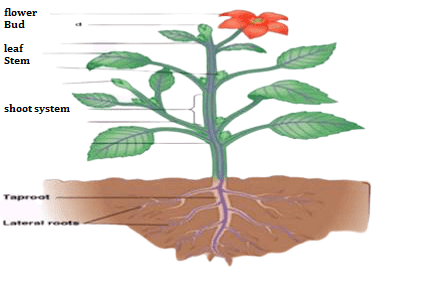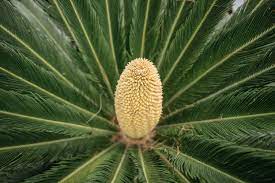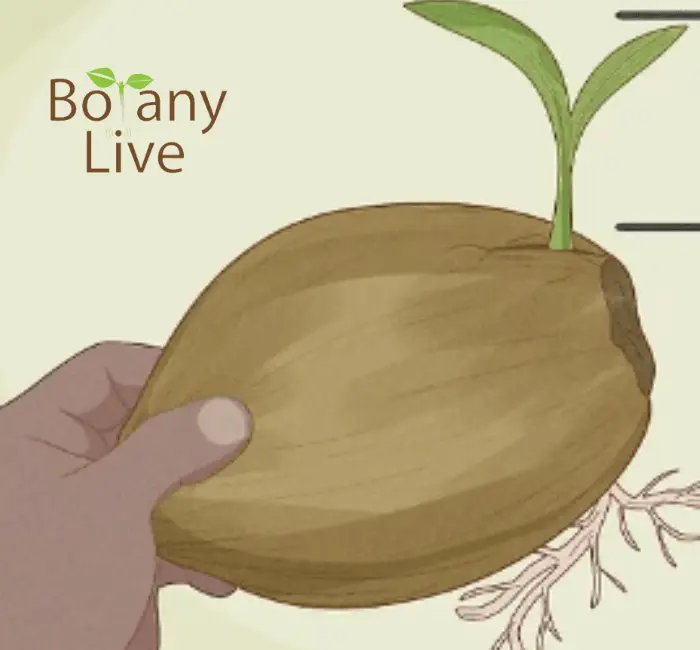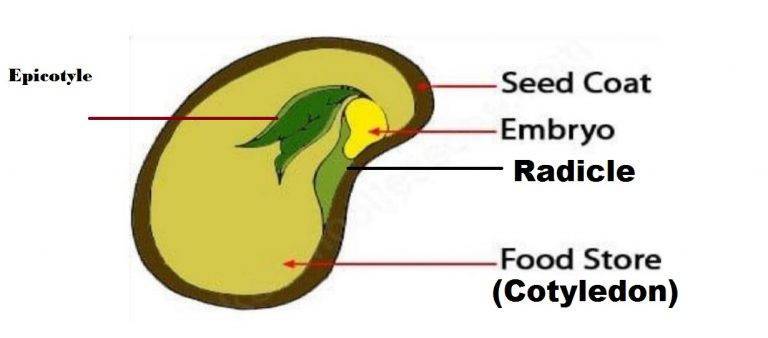Life History Pattern and Resource Allocation
Life History Pattern
The life history pattern of an organism is “the pattern of its survival and reproduction events during its life”. The traits that are studied in life history pattern includes morphological features like biomass, growth rate, size, phonological events, age at maturity, and reproductive features like fecundity (ability to produce new offspring), schedule of reproduction, sex ratio, the pattern of senescence, dormancy and pattern of seed dispersal.
Life history pattern or trait has a very strong effect on the overall existence of a species in nature. These traits vary widely among different closely related species and even in intra-species. A study of life history patterns is done to determine how variation in the above-stated traits drives natural selection. Shreds of evidence from these studies are used to explain why some organisms have a very short life span while some species live for decades or even r centuries. The findings from these studies also help to explain why some organisms produce a few organisms while others are with many thousands of small offspring.
Resource Allocation and Life History Pattern
In nature, resources are available in a limited amount. Plants get all the resources from their biotic and abiotic environment and allocate these resources to their different growing parts. This pattern of resource allocation is usually genetically determined for a particular species but is not always fixed. Abiotic conditions and the presence of other species usually determine and modify these types of patterns. Organisms themselves can adapt to different abiotic conditions and can modify their resource allocation patterns. Suck kind of plasticity differs among species.
Some plants respond to drought conditions by forming a waxy coating (protective cuticle) covering their aerial parts while others may rapidly expand their roots. Aerial parts of plants are the source of sugars and these sugars are converted into storage and structural biochemical compounds. Underground structures (roots) take water and minerals (Nitrogen, Phosphorus, Potassium, Calcium, Magnesium, zinc, etc.). Thus whether a plant allocates its available resources in aerial or underground parts, it is correlated to the other accessory resources available for the plant.
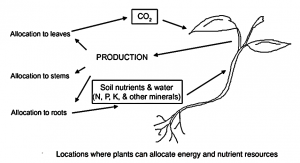
The availability of nitrogen in the terrestrial ecosystem determines the plant growth rate. Plant species differ in how they allocate this limited nitrogen into different parts e.g.
- Grasses and rapidly growing weeds prefer to store nitrogen in their leaves to perform photosynthesis at its best and consequently have a high growth rate.
- Trees preferably invest their available nitrogen in stems and leaves. The stem is the main supportive structure that is involved in light capturing by lifting the leaves above other surrounding plants.
- Sometimes, there appears a balance between investments of resources in stem and leaves that result in slow growth.
- Vines like honeysuckle and kudzu allocate more resources to their leaves. They rely on neighboring plants for support and by heavy investment in leaves, they show fast growth.
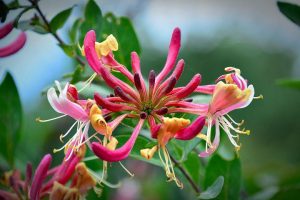
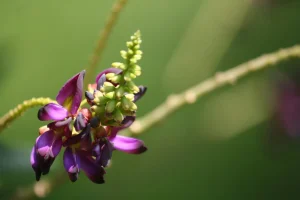
- In water-scarce ecosystems like xerosere and derosere, plants allocate available water to roots to boost their growth. Shrubs like creosote bush have roots deep at 20 meters in soil and thus can extract water from deep soil layers. Here root shoot ratio (R:S) is almost 40:1 in this shrub. R:S is simply the ratio between root and shoot length and weight. A larger ratio means greater root length and weight compared to the shoot.
Root Shoot Ratio and Resource Allocation
The value of the root shoot ratio determines the pattern of resource allocation in plants. If the value of R:S is 1.0, it means that there is a trade-off between resource allocation to root and shoot. R:S value >1 means the plant is allocating relatively more nitrogen and carbon to roots and a value of <1 means relatively more resource allocation in favour of shoots as the table shows.
| R:S Value | Trend | Examples |
| 1 (equal to 1) | Balanced resource allocation | Radishes |
| >1 (more than 1) | More resource allocation to roots | Oats |
| <1 (less than one) | More resource allocation to shoots | alfalfa, beans, and rye |
Large differences in the R:S ratio between the two nutrient treatments indicate high phenotypic plasticity. Plants with high phenotypic plasticity can grow better in habitats with variable climatic conditions. High plasticity is common in temperate regions of the earth. Tropical and subtropical zone plants are with low plasticity. There are some other factors along with nutrients, light, and climatic zone that affect the R:S ratio. These factors include; soil pH, temperature, moisture, wind speed, and the presence of competitors and mutualists.
In a diffused light condition of a forest understory, which type of plant and what root: shoot ratio would be better? One with high root: shoot or the other with low root: shoot? Low light and high humidity conditions mostly favor plants with numerous or large leaves. Thus, such forest understory would be dominated by plants having a low root: shoot weight ratio. Some underlying plants compete with shallow-rooted plants by sending down taproots. So, it is possible to see understory plants with a larger root: shoot length ratio.
In windy conditions, plants with a larger root: shoot ratio would be far better. The best strategy for resource allocation in these plants would be to the roots. Root: shoot weight and length ratio would be more since windy conditions will tend to force plants to remain short-heighted.
In seasonally dry climatic conditions, where there are some rain spells followed by dry weather, plants usually tend to switch back and forth depending upon the season. The plants of such regions undergo considerable underground growth in the rainy season and above-ground growth in the dry season. The overall average root: shoot would always remain intermediate in both extreme conditions.
There is a strong co-relation between life history pattern and resource allocation in the plants. The allocation of resources depends upon the stage of life of a plant. As the plant moves towards the completion of its life cycle, it tries to conserve its available resources in the reproductive parts. A preliminary study of root shoot ratio is also necessary to make the life history pattern understandable.
For more information please visit botanylive.com
I’m Dr Qaiser Maqsood (PhD), a dedicated researcher and expert in Biological Sciences, Gardening, Bio-Diversity, Ecology, and Environmental Sciences. I’m much concerned about Environmental Pollution, Climate Change, Plantation, Gardening, and Global Warming. My passion is to explore innovative solutions in all these fields.
Be aware that we have ONLY ONE EARTH. Protect it!!

